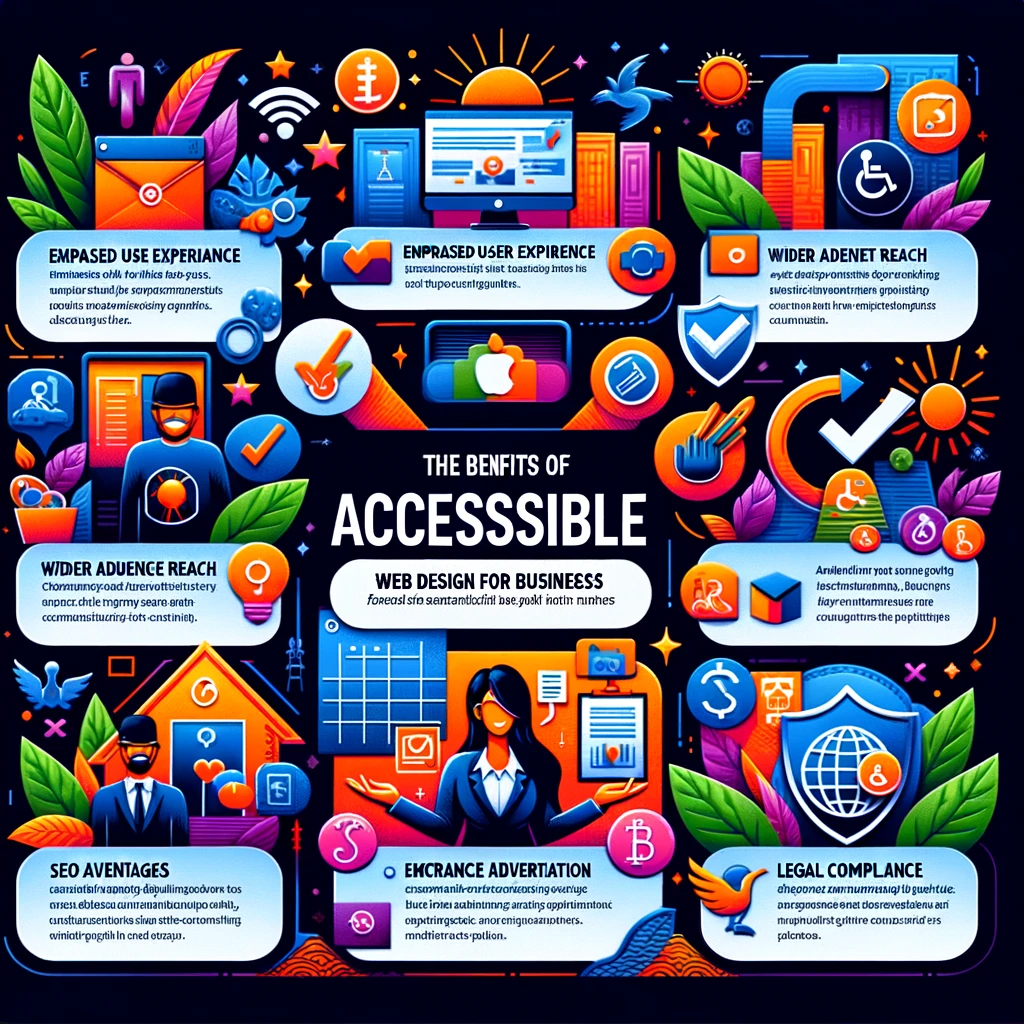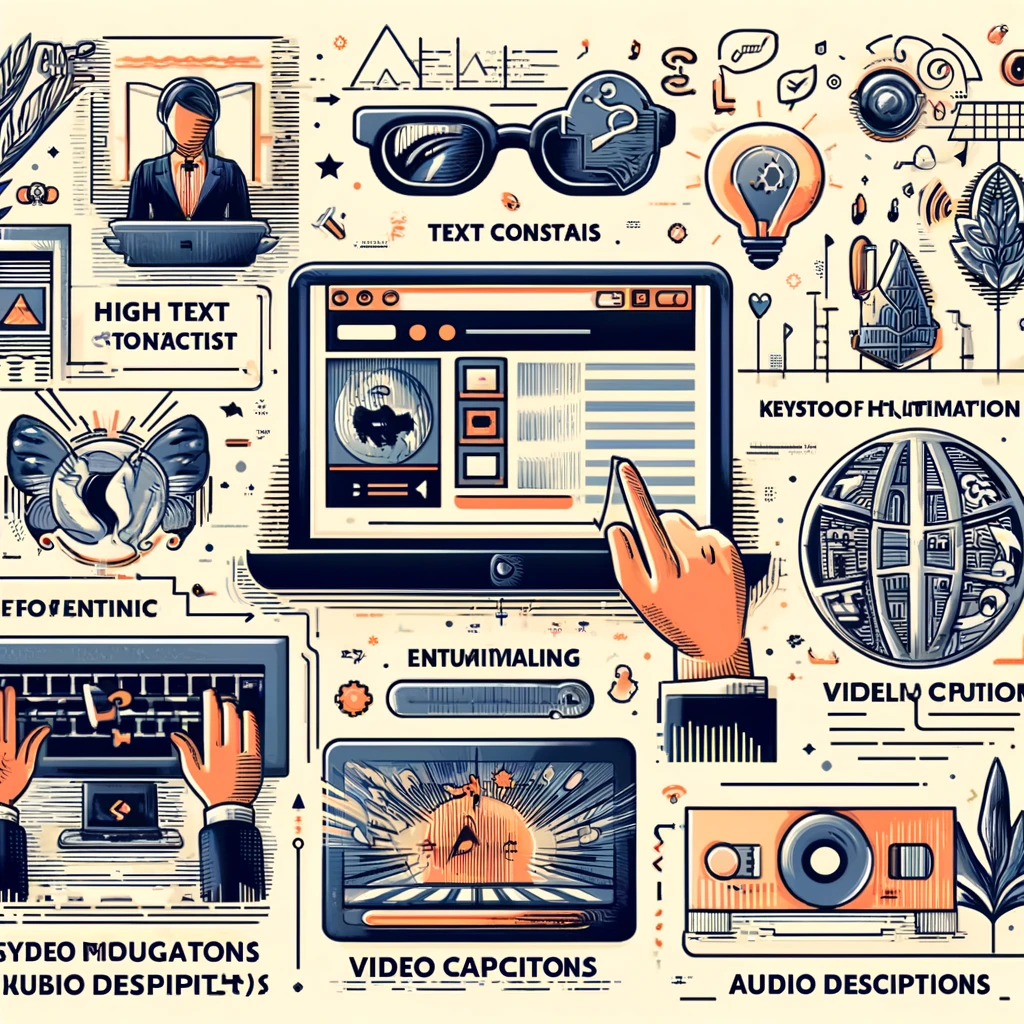Introduction

Hello, Columbia business owners! Have you ever considered how accessible your website is to all users, including those with disabilities? Web accessibility isn’t just about broadening your audience—it’s also about creating a more inclusive community and adhering to legal standards. In today’s digital age, ensuring that everyone can interact with your online content is both a moral imperative and a strategic advantage.
Why focus on accessibility? It’s simple: every visitor matters, and no business can afford to ignore potential customers. Moreover, accessible websites tend to rank better on search engines and provide a better user experience for everyone, not just people with disabilities. From a legal perspective, adhering to accessibility standards can also protect your business from costly discrimination lawsuits.
In this blog post, we’ll explore what web accessibility means, why it’s crucial for your Columbia business, and how you can implement effective practices to make your site accessible to everyone. By the end of this guide, you’ll understand how to enhance your site’s usability and why doing so is beneficial for your business and the community at large.
Understanding Web Accessibility
Hey there! Let’s break down what web accessibility really means and why it’s crucial for your website. When we talk about web accessibility, we’re referring to the inclusive practice of removing barriers that prevent interaction with, or access to websites, by people with disabilities. When your website is accessible, all users can navigate, understand, and interact with your content effectively.
What is Web Accessibility?
Web accessibility means that websites, tools, and technologies are designed and developed so that people with disabilities can use them. More specifically, people can:
- Perceive information and user interface.
- Understand the information and the operation of the user interface.
- Navigate and interact with the website and tools.
Key Guidelines: WCAG
The Web Content Accessibility Guidelines (WCAG) are developed through the W3C process in cooperation with individuals and organizations around the world. They provide a single shared standard for web content accessibility that meets the needs of individuals, organizations, and governments internationally.
- WCAG Principles: The guidelines are built around four principles, stating that sites must be Perceivable, Operable, Understandable, and Robust (POUR).
Importance for All Users
While it’s essential to support users with disabilities, web accessibility also benefits others, such as older people, those with temporary disabilities, or those in challenging environments.
Here’s a brief overview of WCAG principles:
| Principle | Description |
|---|---|
| Perceivable | Information and user interface components must be presentable to users in ways they can perceive. This means that users must be able to perceive the information being presented (it can’t be invisible to all of their senses). |
| Operable | User interface components and navigation must be operable. This means that users must be able to operate the interface (the interface cannot require interaction that a user cannot perform). |
| Understandable | Information and the operation of the user interface must be understandable. This means that users must be able to understand the information as well as the operation of the user interface (the content or operation cannot be beyond their understanding). |
| Robust | Content must be robust enough that it can be interpreted reliably by a wide variety of user agents, including assistive technologies. This means that users must be able to access the content as technologies advance (as technologies and user agents evolve, the content should remain accessible). |
By ensuring your website adheres to these guidelines, you not only enhance accessibility but also improve the overall user experience for everyone.
Benefits of Accessible Web Design

Hello again! Now that you understand what web accessibility is, let’s talk about why it’s not just a good deed but also smart business. Making your website accessible can have a range of positive impacts on your Columbia business. Here’s how:
Enhanced User Experience
Accessible design focuses on creating a site that is usable for all people, which naturally leads to a better user experience. When a site is easy to navigate and understand, it keeps users coming back.
Wider Audience Reach
By accommodating everyone, including the over 61 million adults in the U.S. with some type of disability, you expand your potential audience significantly. Accessible websites connect with more people, which can translate into increased engagement and higher sales.
SEO Benefits
Search engines favor websites that provide a good user experience. Many elements of accessible web design, such as image alt text and proper heading structure, also improve your SEO. This means better visibility in search results.
Legal Compliance
Many regions, including the U.S. with the ADA (Americans with Disabilities Act), require certain businesses to make their websites accessible. Meeting these requirements not only avoids penalties but also showcases your commitment to inclusivity.
Here’s a quick summary of these benefits:
| Benefit | Description | Impact |
|---|---|---|
| Enhanced User Experience | Ensures the site is usable for all, improving satisfaction. | Increases user retention and satisfaction. |
| Wider Audience Reach | Makes your site accessible to people with disabilities. | Expands market reach and potential customer base. |
| SEO Benefits | Aligns with SEO best practices like alt text and headings. | Improves search engine ranking and visibility. |
| Legal Compliance | Adheres to laws like the ADA. | Avoids legal issues and promotes social responsibility. |
By embracing accessible design, you not only make your site more inclusive but also improve its overall performance and reach. It’s a win-win for everyone involved!
Key Elements of Accessible Web Design
Alright, let’s dive into the nuts and bolts of what makes a website accessible. There are several key elements that you should consider to ensure that everyone can fully interact with your site. These foundational aspects are critical to creating an inclusive digital presence for your Columbia business.
Textual Content
Accessibility starts with how you handle text on your website.
- Alt Text for Images: Provide descriptive alt text for all images. This helps screen readers convey what the image represents to users who cannot see them.
- Readable Fonts: Use fonts that are easy to read and have adjustable sizes to accommodate users with visual impairments.
- Clear Language: Write content in simple, clear language to assist users with cognitive disabilities.
Navigability
Your site needs to be easy to navigate without a mouse, which is crucial for users with physical disabilities.
- Keyboard Navigation: Ensure all interactive elements are accessible via keyboard.
- Descriptive Links: Use meaningful text for links rather than vague terms like “click here,” which improves understanding and context.
Multimedia
Audio and video content must be accessible to all users.
- Captions and Transcripts: Provide captions for videos and transcripts for audio content, aiding those who are deaf or hard of hearing.
Color and Contrast
Visual presentation matters significantly in accessibility.
- High Contrast: Text and background colors should contrast well to be legible for users with visual impairments.
- Color-Blind Friendly: Avoid using color as the only method of conveying information.
Here’s a brief overview of these elements:
| Element | Description | Importance |
|---|---|---|
| Alt Text for Images | Describes images to screen reader users. | Essential for visually impaired users. |
| Keyboard Navigation | Allows navigation without a mouse. | Crucial for users with physical disabilities. |
| Captions/Transcripts | Makes audio and video accessible. | Needed for deaf and hard of hearing users. |
| High Contrast | Ensures text is readable against its background. | Important for users with low vision. |
Understanding and implementing these key elements will make your website more accessible and user-friendly, not just for those with disabilities but for all your visitors.
Tools and Resources for Evaluating Accessibility

Hello again! Now that you’re familiar with the key elements of accessible web design, let’s talk about how you can evaluate your website’s accessibility. This is crucial for ensuring your site meets the required accessibility standards and provides a great user experience for everyone. Luckily, there are several tools and resources available that can help you with this.
Accessibility Evaluation Tools
Here are some tools that can automatically check your website for accessibility issues:
- WAVE (Web Accessibility Evaluation Tool): This tool provides a visual representation of potential accessibility issues on your website.
- Axe Accessibility Checker: A browser extension that allows you to test web pages for accessibility issues directly from your browser.
- Google Lighthouse: An open-source, automated tool that includes accessibility audits among other things like performance and SEO.
Manual Testing and Expert Reviews
While automated tools are helpful, they don’t catch everything. It’s also important to conduct manual testing and possibly engage experts to review your site:
- Keyboard Navigation Tests: Manually check if all interactive elements can be accessed using the keyboard alone.
- Screen Reader Testing: Use screen readers like JAWS or NVDA to experience your site from the perspective of visually impaired users.
Resources for Learning and Improvement
To further your understanding and keep up with accessibility standards, consider these resources:
- WebAIM (Web Accessibility In Mind): Provides extensive information and training on web accessibility.
- The A11Y Project: A community-driven effort to make web accessibility easier with checklists and techniques.
Here’s a table summarizing some tools and their uses:
| Tool | Type | Purpose |
|---|---|---|
| WAVE | Automated | Identifies many accessibility issues visually |
| Axe Accessibility Checker | Automated | Runs accessibility checks in the browser |
| Google Lighthouse | Automated | Performs comprehensive accessibility audits |
| JAWS/NVDA | Manual | Helps test how screen readers interpret your site |
Understanding and utilizing these tools can significantly help in making your website accessible to all users, ensuring compliance with standards, and improving overall user experience.
Implementing Accessibility in Your Website

Great, you’re now equipped with the knowledge of what web accessibility involves and how to evaluate it. Let’s roll up our sleeves and dive into how you can implement these accessibility features on your Columbia business website. It’s easier than you might think to start making a difference!
Start with the Basics
First things first, address the low-hanging fruit:
- Alt Text for Images: Start by adding descriptive alt text to all images on your site. This is one of the easiest and most impactful changes you can make.
- Text Contrast: Ensure that the text on your site has sufficient contrast against its background. This can be a quick fix but has a big impact on readability.
Structuring Your Content
Properly structured content is key to accessibility:
- Use Semantic HTML: Utilize HTML elements for their intended purpose. For example, use
<header>,<footer>,<article>, and<section>tags to structure your content logically. - Headings: Ensure that headings (`
<h1>` through `<h6>`) are used to structure content hierarchically, making it easier for screen readers to navigate your site.
Enhancing Navigability
Making your site easy to navigate is crucial for all users, especially those using assistive technologies:
- Keyboard Navigation: Ensure that all interactive elements are accessible via keyboard alone. This includes links, buttons, and form fields.
- Skip Links: Implement skip links at the top of your pages to allow users to bypass repetitive content and directly access the main content.
Multimedia Adjustments
For a fully accessible site, address audio and visual content:
- Video Captions: Provide captions for all videos. This not only aids hearing-impaired users but also enhances the viewing experience in noisy or sound-sensitive environments.
- Audio Descriptions: Offer descriptions for all critical visual information in your videos to aid users who can’t see the content.
Regular Audits and Updates
Accessibility isn’t a one-time fix; it requires ongoing attention:
- Regular Audits: Use the tools discussed in Section 4 to regularly check your site for new issues.
- Stay Updated: As web standards and technologies evolve, so do accessibility requirements. Keep yourself updated with the latest practices and standards.
Here’s a quick overview to keep handy:
| Task | Tool/Technique | Impact |
|---|---|---|
| Alt Text for Images | Descriptive text | Enhances accessibility for visually impaired |
| Text Contrast | High contrast ratios | Improves readability for all users |
| Semantic HTML | Proper HTML tags | Helps structure content logically |
| Keyboard Navigation | Accessible interactive elements | Ensures site usability without a mouse |
| Video Captions | Closed captions | Aids hearing-impaired and in sound-sensitive environments |
By taking these steps, you can significantly increase the accessibility of your website, making it a welcoming place for all users, and ensuring your business stands out as inclusive and user-friendly.
Conclusion

Well, we’ve covered quite a bit about web accessibility, haven’t we? From understanding what it entails to exploring the tools for evaluation and diving into practical implementation strategies. It’s clear that making your Columbia business website accessible is not just about compliance—it’s about embracing inclusivity and enhancing the experience for all users.
Recap of Key Points
- Web Accessibility is Essential: It’s crucial for ensuring that everyone, regardless of ability, can access and benefit from your site.
- Benefits are Broad: Enhanced user experience, expanded audience reach, improved SEO, and compliance with legal standards are just a few of the advantages.
- Implementation is Ongoing: Accessibility needs to be maintained and updated regularly to adapt to new technologies and standards.
Moving Forward
As you continue on your journey to improve your website’s accessibility, keep the momentum going:
- Stay Educated: Web standards and accessibility guidelines are constantly evolving. Continuing education will help you stay compliant and innovative.
- Seek Feedback: Engage with users, especially those with disabilities, to get feedback on your website’s accessibility. This direct input can guide your ongoing improvements.
- Monitor and Adjust: Regularly review your website with the tools discussed to ensure it remains accessible as it evolves.
Remember, accessibility is not a destination but a journey—one that reflects your commitment to serving all customers equally.